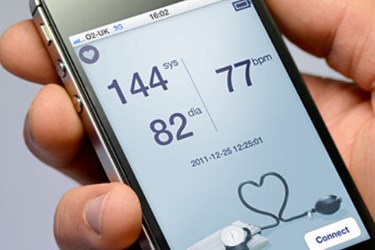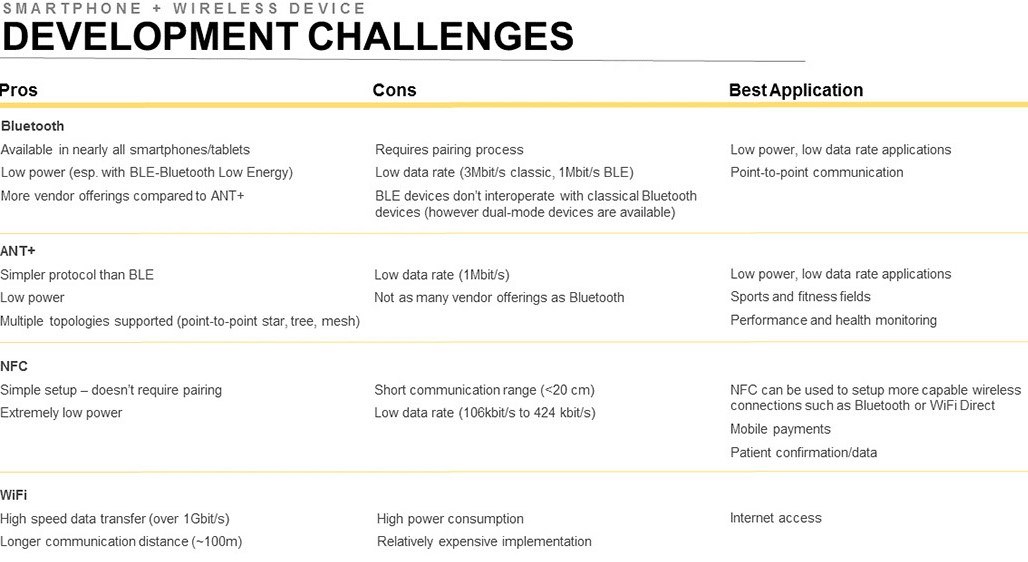4 Avenues To Leveraging A Smartphone In Your Connected Health Product

By Mark Schwartz, CEO, PDT
More than 20 years ago, as I finished up working on the Motorola StarTac, the first mobile “flip” phone, I could only imagine what the cell phone would become. In 1995, I left Motorola to establish PDT, where we’ve been fortunate enough to help bring product solutions to market that have spanned the gamut of industries: medical devices, defense products, consumer electronics, aerospace solutions, toys, etc.
During these two decades, I’ve had the unique experience of watching the evolution of connectivity, the proliferation of the smartphone and how recently the two are coming together to redefine how we manage our health. Call it connected health, telemedicine, telehealth, or mobile health, people increasingly want to leverage the familiarity and convenience of their smartphones to help them manage conditions or maintain wellness. Physicians, hospitals, insurance companies, and pharma all have a stake in this movement, as well.
Considerations such as durability, battery life, security, user experience, and much more are typically top of mind for our clients as they embark on these programs. But the principal consideration for any smartphone is its principal purpose: Connectivity and communication. Many times, my team has faced the challenges associated with developing products that have to communicate with each other and that have varying requirements. I like to break down the avenues of how a health solution can leverage a smartphone into four categories, ordered by increasing level of complexity.
Smartphone App
The Emotion Sense app for iPhone and Android is one example of a wellness app that aims to enable users to explore how their mood changes are affecting, or affected by, the activities they engage in. The app requires the user to report his moods, thoughts, and symptoms while it gathers data on physical activity, sociability, and mobility in parallel through the phone’s integrated sensors, including the accelerometer and geopositioning.
Simple and relatively inexpensive to develop, apps can be incredibly powerful tools, especially when they take advantage of the host of tools already built into the smartphone; however, accuracy of the data can be questionable, as there is typically some requirement of user input. Of course, choosing the right mobile platform, be it Android, iOS, or another, is paramount. Furthermore, it’s important to know ahead of time whether your wellness app could be perceived by regulators — such as the U.S. Food and Drug Administration (FDA) or Federal Communications Commission (FCC) — as a medical device.
Smartphone + Wireless Device
Fitbit, Jawbone, Garmin, Nike, and more have developed wearable fitness trackers that track everything from movement to sleep, then communicate the data to a user’s smartphone via an app. The benefit of this development approach is your ability to put the specific sensors you need for your application in your own device, rather than depending on the varying sensors built into different smartphones. Architecture is key when this sort of program is developed. Consider which wireless protocol to use, which battery, and how much bandwidth you’ll need. Below is a chart that outlines the pros and cons of various wireless protocols, and best applications for each.

Smartphone + Hardwired Device
I like to call these “Appcessories” (a combination of an app and a physical accessory). This is when you create a device that is hardwired to a smartphone, leveraging the smartphone for any combination of battery power, computing ability, user interface, screen and/or more. A great example of this, while not health related, is the SCOUT Satellite Communications Device for soldiers in the field. This is an example of a different industry creating a solution that could easily inspire unique solutions for parallel industries — in this case, life sciences or telemedicine.
In the instance of SCOUT, an iPhone is used as the user interface and brains of the device, while the device itself is designed to protect the iPhone from the elements. Leveraging the iPhone in this way enabled us to redesign a solution that was previously 160 pounds of cumbersome, heavy, and fragile equipment into a six-pound package. Just think of the implications for home-use medical devices.
Medical Device Ecosystem
Atop my four levels of connectivity and smartphone integration is a medical device ecosystem, where a smartphone is the central hub of a suite of products that have the ability to gather data, communicate it to many different sources — often leverages the cloud — and the smartphone can even use the data collected to prompt an action, such as delivery of a drug. This, of course, is the most complex development program, requiring research, user experience development, engineering, software development and more.
A clear benefit of this route is that the ecosystem is not dependent on the smartphone itself, and thus will not be obsolete when the phone becomes so. The sensors, computing, and other critical functionality are built into the other devices within the ecosystem. When embarking on a development program involving the integration of a smartphone, some things to think about at the onset include:
- Who will be using your solution, and what stakeholders will need what information? In what form?
- How much time do you have to develop a solution?
- Does it have to work with existing components?
- What does your intellectual property (IP) cover?
- Do you need automated input to verify compliance?
As you can see, there are many ways to leverage smartphone technology in a medical application, be it an unregulated wellness app or a complex medical device ecosystem. In any scenario, you will have to consider how technology will evolve between the time you begin development and the time when your product is market-ready. You will have to consider risk management related to cybersecurity, and you will need to determine whether you have sufficient talent within your company to develop the product, or whether an outsourcing or consulting solution is your best pathway to market.
Mark Schwartz is CEO at Product Development Technologies, which has provided comprehensive product development services via a proven, process-driven approach since 1995. The firm’s clients have included Steris, Cardinal Health, and Covidien.
